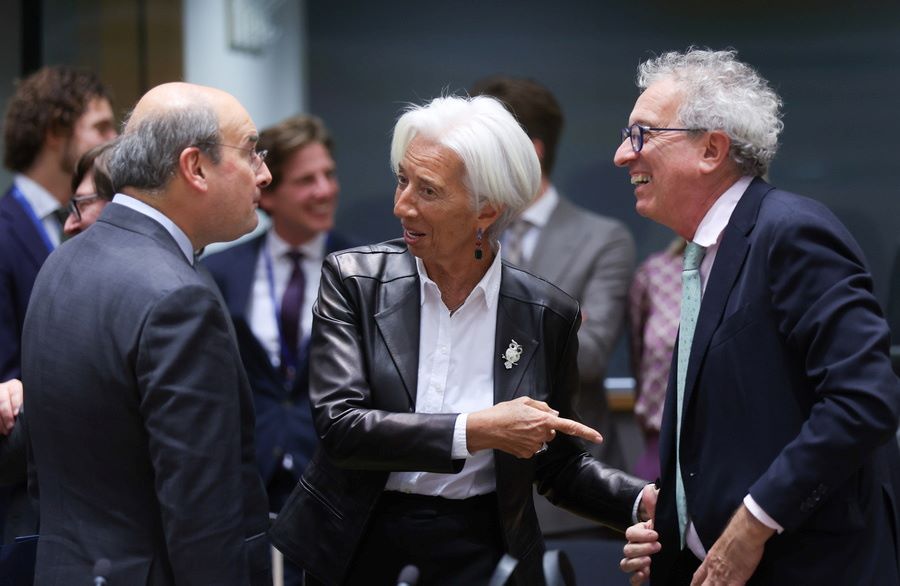
Bank of Greece: Growth acceleration for Greek economy in 2024 and 2025: Minor downturn in 2026

FILE PHOTO: Bank of Greece central building in Athens. ANA – MPA/ALEXANDROS BELTES
Τhe Bank of Greece predicts an acceleration of the growth rate of the Greek economy for 2024 and 2025, followed by a slight decline in 2026.
In the report of “Note on the Greek economy” published on Friday the growth rate of the Greek economy in 2023 is expected at 2.4%, accelerating marginally to 2.5% in 2024 and 2025, and decreasing to 2.3% in 2026.
The main driving forces of activity in the coming years will continue to be investment and private consumption, while the contribution of the external sector will be marginally negative.
Monetary policy will continue to be restrictive for some time while public investment will contribute positively to growth thanks to the funds of the Recovery and Resilience Facility (RRF).
More specifically, private consumption will increase by 2.0% on average during the projection period. It will be supported by strong real household disposable income as employment continues to recover and inflation eases. Public consumption will have a marginally negative effect.
Investment will continue to grow at a high rate throughout the projection period, supported by available European resources. These resources, combined with the high liquidity in the banking sector, will crowd in private capital. The high investment growth rates reflect the improvement in the economic climate, particularly after the economy has been upgraded to the investment grade, and following the significant disinvestment during the last decade.
Exports will continue to grow notably over the coming years but at a softer pace compared to 2022, due to an expected weakening of economic activity in the euro area and the related competitiveness losses as a result of higher ULCs. The contribution of the trade sector to real GDP will be marginally positive in 2023, while in the following years it will be slightly negative. This is largely due to the intense investment activity, which will strongly increase imports.
- The rate of unemployment is expected to be 11.1% in 2023 (year average), gradually deescalating to 8.2% in 2026. This trend reflects the continued recovery of economic activity.
Headline inflation averaged 4.2% in 2023, from 9.3% in 2022, mainly reflecting the large reduction in energy prices (-13.5%). For 2024 both measures of inflation are anticipated to decelerate further posting 3.0% and 2.9%, respectively. This development is expected on the back of further declines in the annual rates of change of food components, non-energy industrial goods and services, while energy prices are projected to remain unchanged. Inflation is projected to gradually decelerate bfurther in 2025 and 2026, with muted energy inflation and decelerating rates in food, NEIG, and services, within the context of lower profits and robust wage growth.
The risks surrounding the growth forecasts are mainly on the downside. Negative risks are:
(a) a deterioration of the geopolitical crisis in Ukraine and the Middle East, and the related negative consequences for the international economic environment,
(b) a lower than expected rate of absorption of the RRF funds and
(c) a delay in the implementation of the reforms. Upside risks are related to an improvement in the global economic outlook.
Source: ANA – MPA
Ακολουθήστε τη HELLAS JOURNAL στη NEWS GOOGLEKasselakis: My dream is not to become prime minister but to contribute to my country

